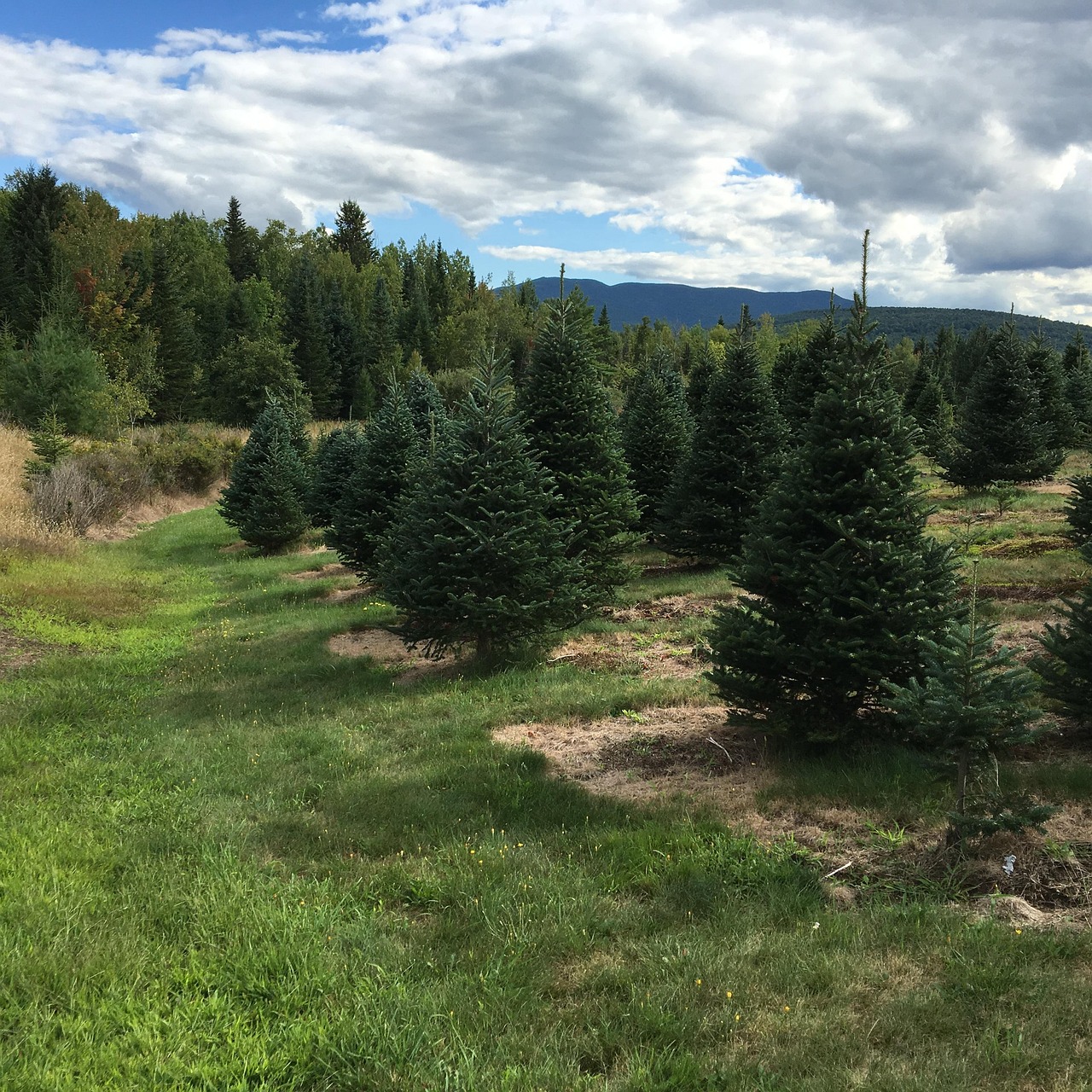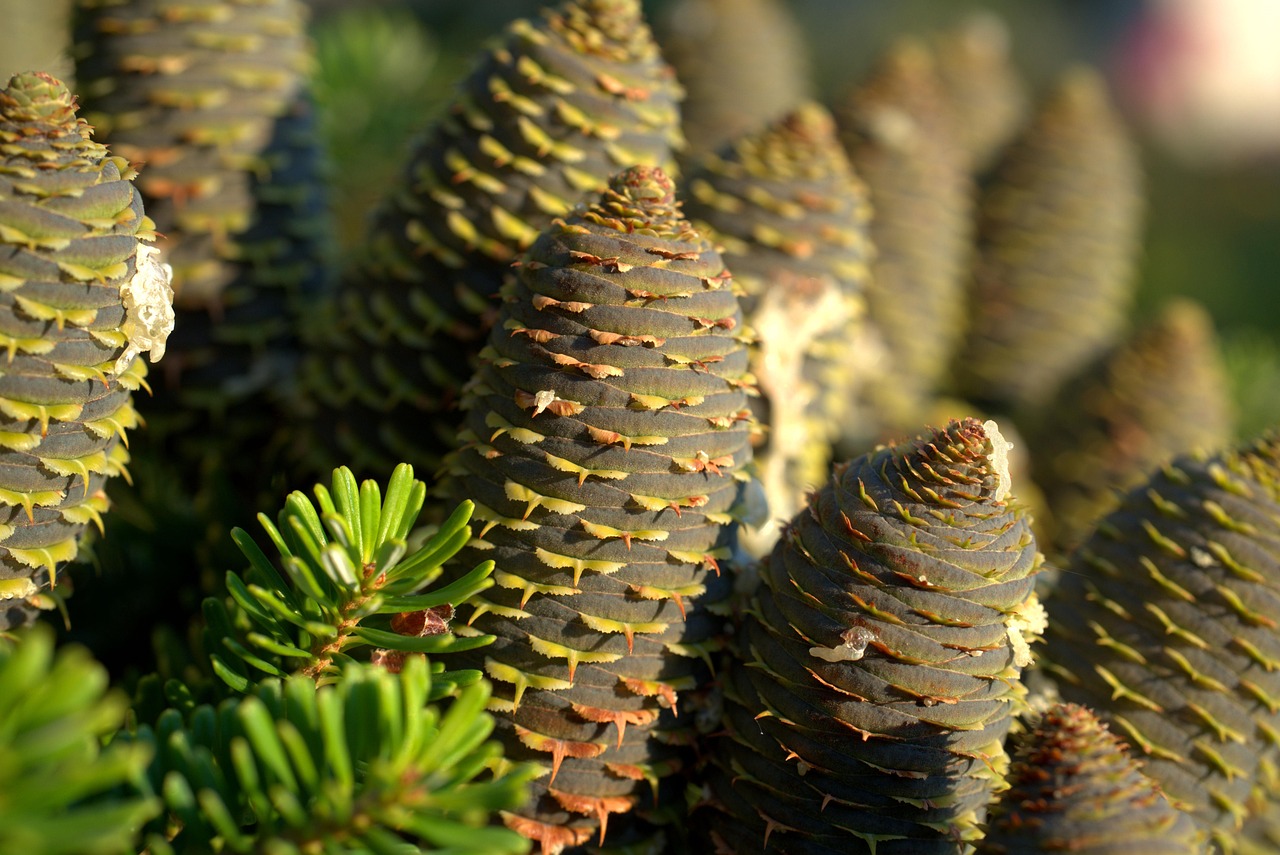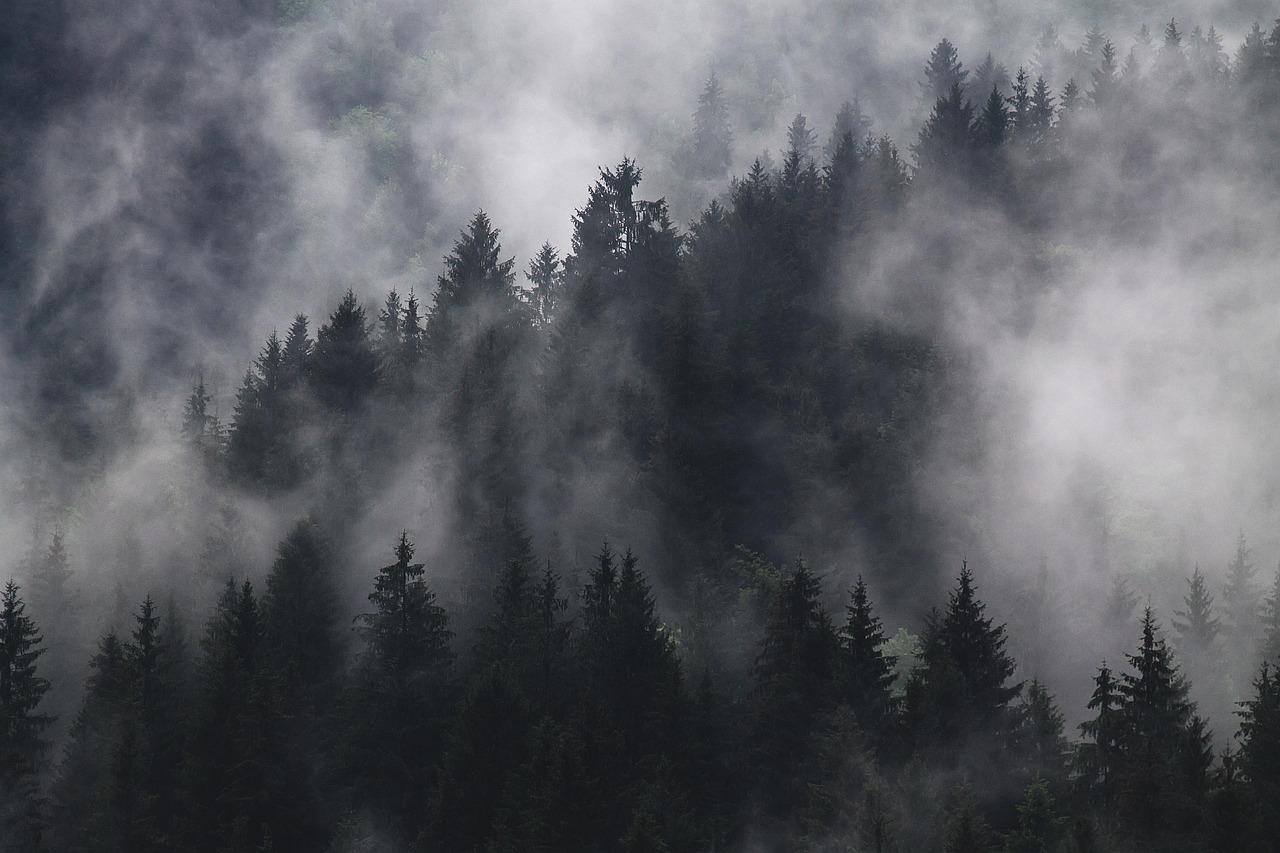Balsam fir trees require partial to full shade, thriving best in environments where they receive filtered sunlight. Direct sunlight can be too intense for young trees, while mature trees can tolerate more light. However, they still prefer a cooler, shaded environment for optimal growth.
Understanding Balsam Fir Trees
Balsam fir (Abies balsamea) is a species native to North America, particularly found in the northeastern United States and Canada. Known for its fragrant needles and symmetrical shape, this evergreen tree is a popular choice for landscaping and Christmas trees. Balsam firs can grow up to 60 feet tall and have a lifespan of 30 to 70 years, depending on their environment and care.

These trees are particularly well-suited to cooler climates and are commonly found in mountainous regions or areas with moist, well-drained soils. Understanding their light needs is essential for successful cultivation and maintenance. Light is a crucial factor affecting their growth, health, and overall vigor.
Light Requirements
The light needs of balsam fir trees can vary based on their age and growth stage. Young saplings typically require more shaded conditions, while older trees can adapt to brighter environments. Here are some key points regarding their light needs:
- Young balsam fir trees thrive in filtered sunlight or partial shade.
- Mature balsam firs can tolerate full sun but still prefer dappled shade.
- Excessive direct sunlight can lead to needle burn and stress.
- They naturally grow under the canopy of taller trees, so they are adapted to lower light levels.
Effects of Light on Growth
The amount of light a balsam fir tree receives directly impacts its growth patterns. Insufficient light can stunt growth and lead to weak structures. Conversely, too much sunlight can cause damage. Below are some effects of varying light conditions on balsam fir trees:

| Light Condition | Effect on Growth |
|---|---|
| Full Shade | Poor growth, thin branches, and increased susceptibility to diseases. |
| Partial Shade | Healthy growth with balanced needle production; ideal for young trees. |
| Full Sun | Good growth for mature trees; risk of needle burn if conditions are too hot. |
In their natural habitat, balsam firs often grow under a canopy of taller trees. This environment provides them with the filtered light they prefer. When planting balsam firs in a landscape setting, it is essential to replicate these conditions as closely as possible to promote healthy growth.
Seasonal Changes and Light Needs
The seasonal changes in light availability also affect the needs of balsam fir trees. During the spring and summer months, days are longer, providing ample sunlight for growth. In contrast, shorter days during fall and winter mean that these trees may experience reduced growth rates. Understanding these seasonal variations is crucial for maintaining the health of balsam firs.
In colder months, the tree enters a dormant phase where its light requirements decrease significantly. Reducing stress by ensuring that younger balsam firs remain in shaded areas during extreme heat or direct sunlight will aid in their longevity and health.

Conclusion on Care Practices
To maintain the health of balsam fir trees, gardeners should consider their light needs throughout the year. By placing young saplings in partial shade and ensuring mature trees receive adequate but not excessive sunlight, one can foster a thriving environment that promotes robust growth and resilience against diseases.
Factors Influencing Light Needs
Several factors influence the light needs of balsam fir trees. Environmental conditions, soil quality, and the surrounding flora all play significant roles in determining how much light these trees require for optimal growth. Understanding these factors can assist gardeners and landscapers in creating the perfect environment for balsam firs.
Soil Quality
The type of soil in which balsam fir trees are planted significantly affects their light needs. Well-drained, acidic soils are ideal for these trees. Poor-quality soils can lead to inadequate nutrient uptake, making it essential to consider the following:
- Drainage: Balsam firs prefer moist but well-drained soils. Waterlogged conditions can lead to root rot.
- Soil pH: An acidic pH between 4.5 and 6.0 is preferred for optimal growth.
- Nutrient Levels: Nutrient-rich soils provide the necessary elements for healthy growth, reducing competition with other plants for sunlight.
Surrounding Vegetation
The presence of other plants can also affect the light availability for balsam fir trees. In forests, these trees often grow alongside taller species that provide shade. When planting balsam firs in a landscape, it is essential to consider:

- Competing Trees: Nearby tall trees may block sunlight, making it difficult for young firs to thrive.
- Ground Cover: Dense ground cover can absorb light and moisture, impacting the firs’ growth.
- Plant Spacing: Sufficient space between trees allows for better light penetration.
Light Adaptation Strategies
Balsam fir trees have developed various strategies to adapt to different light conditions. These adaptations can help them survive and thrive in diverse environments, from dense forests to more open landscapes.
Needle Structure
The needle structure of balsam firs is designed to maximize light absorption. Here are some notable features:
- Needle Length: Longer needles capture more sunlight, enhancing photosynthesis.
- Needle Orientation: Needles may adjust their angle throughout the day to optimize sun exposure.
- Color: Dark green needles are more efficient at absorbing sunlight compared to lighter shades.
Growth Patterns
Balsam firs exhibit specific growth patterns in response to their light environment:
- Apical Dominance: In low-light conditions, balsam firs may exhibit increased vertical growth to reach available light sources.
- Branch Development: In shaded areas, lateral branches may elongate towards openings where light is available.
Pruning and Light Management
Proper pruning techniques can enhance light penetration and improve the overall health of balsam fir trees. Pruning should be done with care to avoid damaging the tree. Here are some tips for effective pruning:
- Timing: Prune during late winter or early spring before new growth starts.
- Remove Dead or Diseased Branches: This encourages healthy growth and allows more light to reach the inner parts of the tree.
- Consider Crown Thinning: Thinning the crown helps increase light penetration and air circulation within the tree.
Signs of Light Stress
Balsam fir trees can show signs of stress if their light needs are not met. Recognizing these symptoms early is vital for effective intervention. Common signs include:
- Pale or Discolored Needles: This may indicate insufficient light or nutrient deficiencies.
- Stunted Growth: Trees not receiving enough light may fail to grow at a normal rate.
- Thin or Sparse Foliage: A lack of adequate light can result in reduced needle density.
Taking prompt action upon noticing these symptoms can help restore the tree’s health and ensure proper growth conditions are reestablished.
Conclusion on Light Management Techniques
Understanding and managing the light needs of balsam fir trees is essential for their successful cultivation. By considering factors such as soil quality, surrounding vegetation, and implementing effective pruning techniques, one can create an environment that fosters robust growth and resilience against environmental stresses.
Optimal Growing Conditions for Balsam Fir Trees
To cultivate healthy balsam fir trees, it is essential to create optimal growing conditions. These conditions not only include managing light exposure but also encompass temperature, moisture, and soil characteristics. Each of these factors plays a vital role in the overall health and growth rate of balsam firs.
Temperature Requirements
Balsam fir trees thrive in cooler climates. They are well-adapted to regions that experience cold winters and moderate summers. Here are some important temperature-related facts:
- Ideal Temperature Range: Balsam firs prefer temperatures between 60°F and 75°F during the growing season.
- Cold Hardiness: They can withstand temperatures as low as -40°F, making them suitable for harsh winter climates.
- Heat Sensitivity: Prolonged exposure to high temperatures, especially above 80°F, can stress the tree and affect its growth.
Moisture Needs
Moisture is another critical factor in the health of balsam fir trees. These trees prefer consistently moist soil but are sensitive to waterlogged conditions. Here are some key points regarding their moisture requirements:
- Soil Moisture: Balsam firs thrive in soils that retain moisture without becoming saturated.
- Irrigation: In drier climates or during prolonged dry spells, supplemental watering may be necessary to maintain soil moisture levels.
- Drainage: Good drainage is essential. Planting in areas with poor drainage can lead to root rot and other diseases.
Pests and Diseases Related to Light Conditions
The light conditions that balsam fir trees experience can also influence their susceptibility to pests and diseases. Understanding these relationships is crucial for effective management.
Common Pests
Balsam fir trees may attract certain pests that can thrive in specific light and moisture conditions. Some common pests include:
- Balsam Woolly Adelgid: This sap-sucking insect can weaken trees, especially those stressed by inadequate light or moisture.
- Spruce Budworm: These larvae feed on new growth, and their populations can increase in over-crowded or poorly lit areas.
- Eastern Pine Beetle: This pest can impact stressed trees, particularly those exposed to excessive sunlight or drought conditions.
Diseases
Balsam firs are also susceptible to various diseases, many of which thrive under specific environmental conditions:
- Root Rot: Caused by overwatering or poorly drained soils, this disease can decimate a balsam fir population.
- Needle Cast: Fungal infections can lead to needle drop, often exacerbated by poor light conditions.
- Tip Blight: This disease affects the new growth and is more common in dense, shaded environments where airflow is restricted.
Care Practices for Healthy Growth
Implementing proper care practices can help mitigate the risks associated with pests and diseases while ensuring the balsam fir’s light needs are met. Here are some recommended practices:
- Regular Monitoring: Frequent inspections for pests and diseases can help catch problems early.
- Pest Control: Use integrated pest management techniques to reduce pest populations without harming beneficial insects.
- Fertilization: Applying fertilizers that are rich in nitrogen and other essential nutrients can promote healthy growth, especially in nutrient-poor soils.
Landscape Considerations
When incorporating balsam fir trees into a landscape design, several considerations should be taken into account to ensure they thrive:
- Placement: Position trees where they will receive adequate light and will not be shaded by larger structures or trees.
- Mulching: Applying mulch around the base helps retain soil moisture and suppress weeds, which can compete for light and nutrients.
- Avoiding Compaction: Keep heavy foot traffic away from the root zone to prevent soil compaction, which restricts root growth and moisture retention.
Seasonal Care Adjustments
Balsam fir trees require different care practices during different seasons. Adjusting your care regimen according to seasonal changes will help optimize growth:
- Spring: Fertilize as new growth begins and monitor for pests as they emerge.
- Summer: Ensure adequate watering during hot spells and check regularly for signs of heat stress.
- Fall: Prepare trees for winter by mulching and reducing watering as they enter dormancy.
- Winter: Monitor for snow load on branches, especially in heavy snow areas; consider providing support if necessary.
Additional Considerations for Balsam Fir Care
In addition to light, moisture, and temperature, there are further considerations when caring for balsam fir trees. Understanding these aspects can enhance their growth and overall health.
Soil Amendments
Improving soil conditions can significantly benefit balsam fir trees. Here are some amendments that can help:
- Organic Matter: Incorporating compost or well-rotted manure can enhance soil structure and nutrient content.
- Mulching Materials: Using pine needles or bark mulch not only retains moisture but also adds organic matter as it decomposes.
- pH Adjustment: If soil pH is too high, applying sulfur can help lower it, creating a more acidic environment suitable for balsam firs.
Wildlife Interactions
Balsam fir trees can attract various wildlife. While many species can coexist with the trees, some interactions may require management:
- Deer Browsing: Young balsam firs are susceptible to deer browsing. Consider using fencing or repellents to protect them.
- Bird Habitats: These trees provide excellent habitats for birds and other small animals, enhancing local biodiversity.
- Pest Predators: Encouraging beneficial insects can help control pest populations naturally.
Long-Term Maintenance Strategies
To ensure the longevity of balsam fir trees, long-term maintenance strategies are critical. These strategies include:
- Regular Inspections: Conducting routine checks for signs of disease or pest infestations will allow for timely interventions.
- Soil Testing: Performing soil tests every few years can help monitor nutrient levels and pH, ensuring optimal growing conditions.
- Professional Consultation: Engaging with an arborist or tree care professional can provide tailored advice based on specific site conditions.
Final Thoughts
Balsam fir trees are beautiful and resilient evergreens that can thrive in a variety of conditions when their light needs are adequately met. From their preference for partial shade during their early growth stages to adaptations that allow them to survive in more open settings, understanding these light requirements is vital for successful cultivation.
The health and growth of balsam firs are influenced not only by light but also by moisture levels, soil quality, and seasonal changes. Implementing proper care practices, such as regular monitoring, adequate watering, and appropriate pruning, will ensure that these trees remain robust and healthy throughout their lifespan.
By considering all aspects of their care—from environmental factors to pest management—gardeners can create thriving habitats for balsam fir trees. This holistic approach will not only enhance the aesthetic value of landscapes but also contribute positively to local ecosystems by supporting wildlife and promoting biodiversity.
With careful attention to their needs, balsam fir trees can be a significant asset in any garden or landscape, providing beauty and environmental benefits for many years to come.
